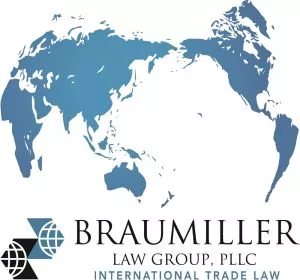In a long-awaited move, the Bureau of Industry and Security (BIS) of the Department of Commerce, announced a proposed rule in January 2013 transferring certain commercial satellite, spacecraft and related items to the control of the Commerce Department from that of the State Department. This proposal is the result of extensive efforts by the satellite and spacecraft industries in the U.S. whose exports have been controlled by the regulations of the State Department. The proposed rule is the latest step in the overall Export Control Reform Initiative first begun in 2007. Currently, the government is working to implement this proposed rule.
Spacecraft and related items are currently controlled under Category XV of the U.S. Munitions List (USML), found in the International Traffic In Arms Regulations (ITAR), overseen by the State Department. The proposed rule would transfer the control of certain items in Category XV to the Commerce Control List (CCL) of the Export Administration Regulations (EAR) overseen by the Commerce Department. The transfer of these items does not result in a "de-control" as the items would still be subject to controls stated in the EAR. Also, it is likely that many, if not all, of the transferred items would still be subject to a license requirement under the EAR. However, an exporter would no longer be responsible for complying with the sometimes more onerous provisions of the ITAR. A new "500" series on the CCL will be created to house these items. The transfer of the items results from a joint effort of the State Department and the Commerce Department, together with input from the Department of Defense, to identify those items in Category XV of the USML which are eligible for transfer. Items will remain on the USML if they meet the following criteria: 1) are inherently military and otherwise warrant control on the USML or 2) if, common to non-military space applications, possess parameters or characteristics that provide a critical military or intelligence advantage to the U.S. and that are almost exclusively available from the U.S. All other items are proposed to move to the CCL in the potential new rule.
One major change is that all spacecraft, including commercial communications satellites, manned or unmanned space vehicles, even if designated as developmental, experimental, research or scientific, will be controlled under the new EAR category. Spacecraft which is specifically listed in the current Category XV of the USML will remain controlled by ITAR. Space qualified parts, components, accessories and attachments will also be controlled. Other items that would fall under the EAR include software specially designed for specific commodities controlled in certain listed 500 series, and technology required for services such as development, production, operation and repair related to certain other listed 500 series.
The new 500 series will still be subject to the main controls in the EAR including anti-terrorism, national security and regional stability. Some items will be subject to missile technology controls in some cases. The licensing policy will be on a case-by-case basis to determine whether the transaction is contrary to national security or foreign policy interests of the U.S. However, some EAR license exceptions will be available for the new series. The STA (Strategic Trade Authorization) license exception is also available, which is applicable to exports to certain countries that are NATO members or multi-regime close allies. This exception will be subject to certain requirements, such as requiring the consignee to agree to an end-user check by the U.S. government in addition to the standard consignee statement required for all STA transactions. Other applicable exceptions include LVS (limited value shipment) up to a value of $1,500 or $5,000 for a specific enumerated item, TMP (temporary exports), GOV (government exports) and RPL (servicing and replacement of parts). As with the rest of the EAR and the ITAR, the use of license exceptions is prohibited if the destination is the subject of a U.S. arms embargo, except if it is a U.S. government export under exception GOV.
There are also some specific export clearance requirements included in the proposed rule. Exports of all the items in the new 500 series must be filed in the Automated Export System (AES) regardless of value or destination, which is a departure from the current general rule governing shipments to Canada, or that have a value of less than $2500. In addition, post-departure filing in the AES is not permitted for the 500 series items. Finally, the Export Control Classification Number in the EAR for a 500 series item must be listed on the same documents on which the destination control statement is provided, and must be listed in the invoice, bill of lading, air waybill or other export control document accompanying the shipment from the point of origin in the U.S. to the ultimate consignee or end user abroad. Both the Department of Commerce and the Department of state published Federal Register notices regarding the proposed move of these satellite and spacecraft items to Commerce's control. Both notices are published in Federal Register Vol. 78, No. 101 (May 24, 2013).
The content of this article is intended to provide a general guide to the subject matter. Specialist advice should be sought about your specific circumstances.

